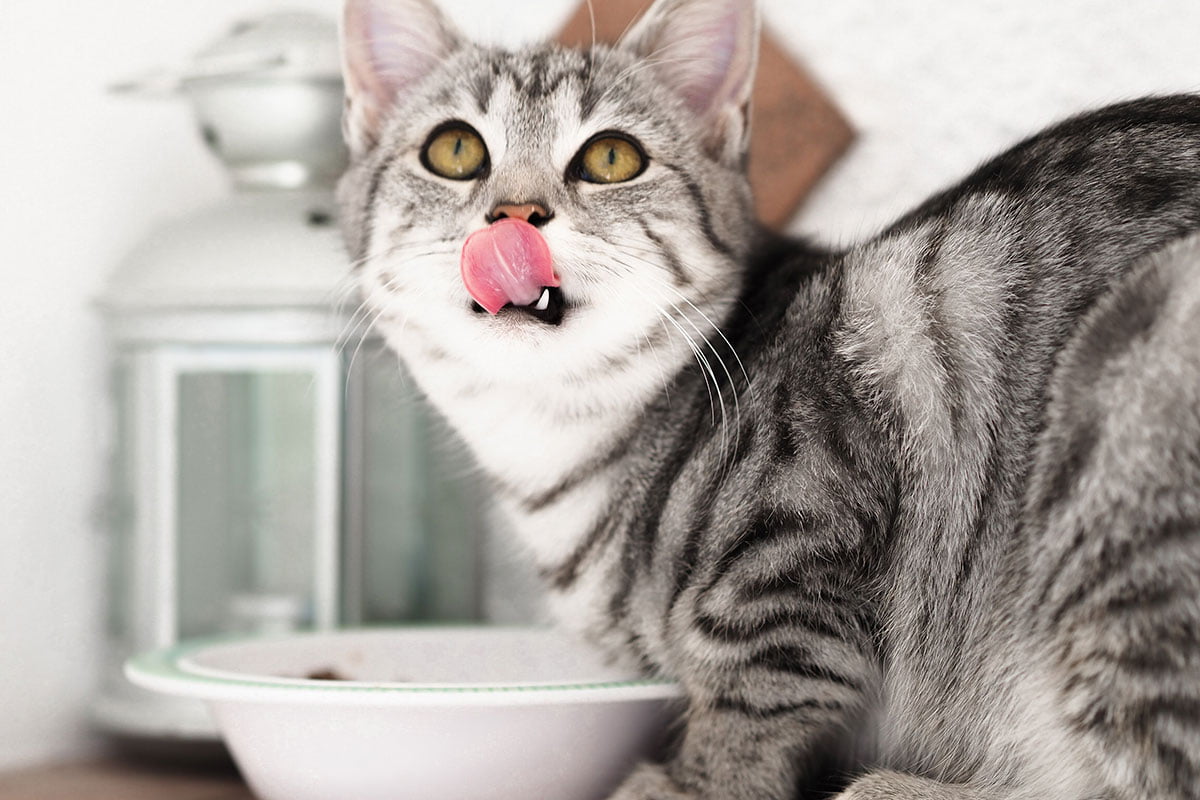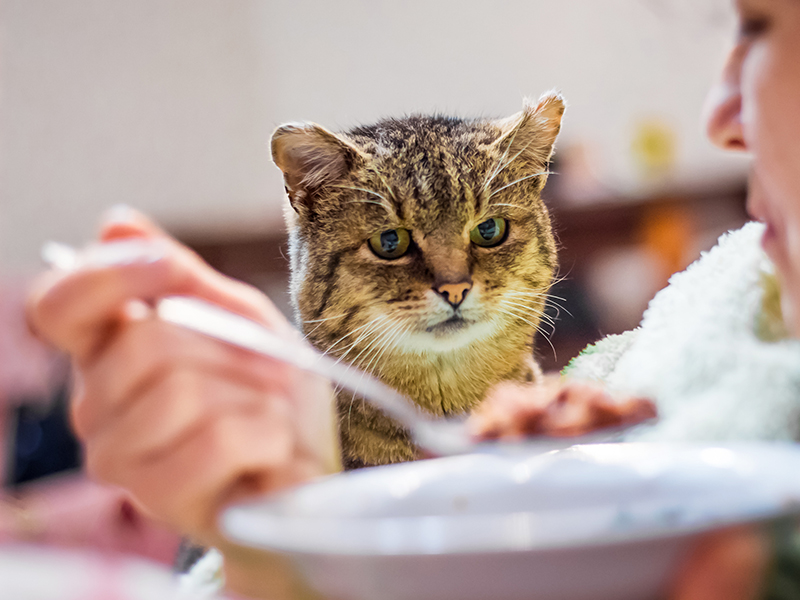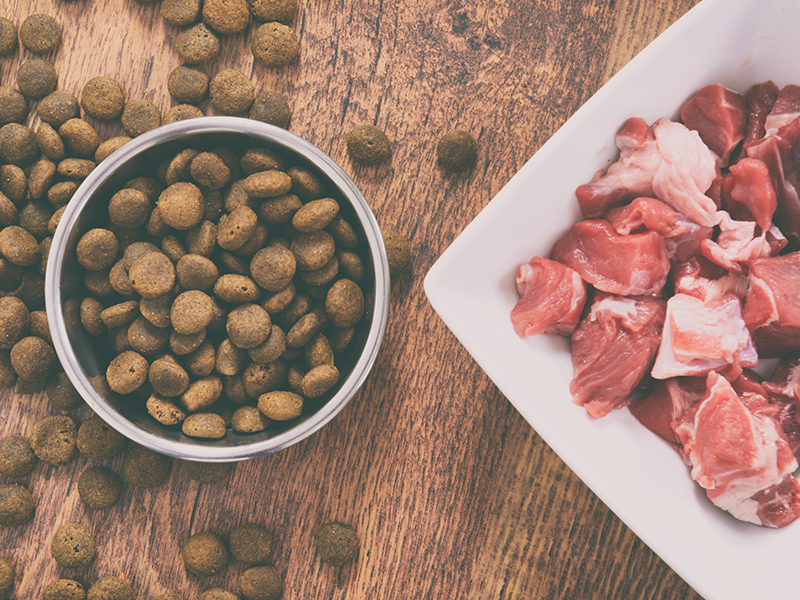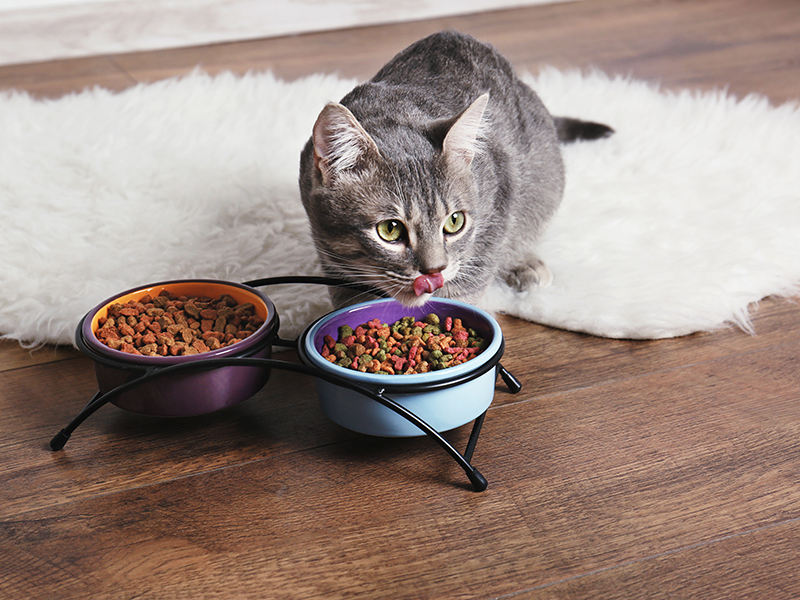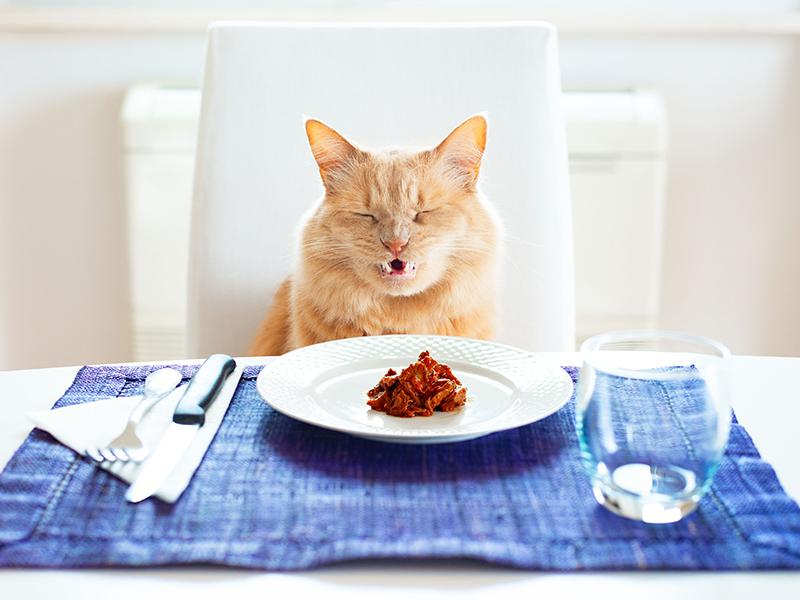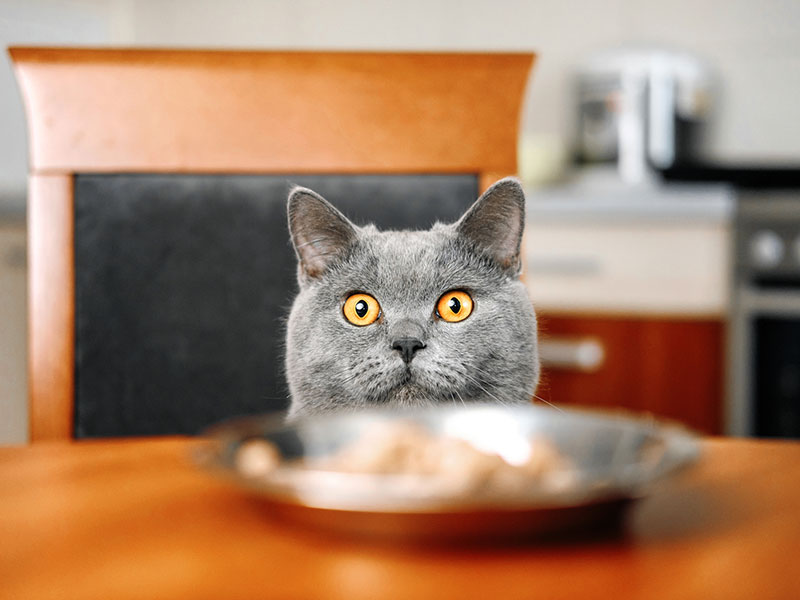Living with a new kitten is always exciting. They are cute, cuddly, and simply a pleasure to be around. As a kitty parent, you’ve been feeding her with an appropriate formula or food designed specifically for young cats. But as she continues to grow and mature, how do you know when to switch from kitten food to regular, adult cat food? In other words, how long should I feed my cat kitten food? And how do I go about handling the transition? This article is meant to answer these exact questions, by giving the thoughtful cat parent like you all the information to guide you through the change from kitten to cat food.
What Kinds of Food Should Kittens Eat?
Nutritional needs for kittens and adult cats are different, which is why it’s important to feed them differently. The biggest difference is that kittens are growing at a fast rate, while adult cats have reached maturity and have stopped growing. Because it takes a lot of energy to grow, kittens need more energy from their food than adult cats. To put things in perspective, remember that most kittens weigh only a few ounces at birth, add 2 pounds over the next 2-3 months, and then continue to grow until just under a year. It takes a lot of calories to fuel all that growth! Kittens usually also engage in a lot of play, which further increases their energy needs.

At the earliest stage, kittens start off by drinking their mother’s milk, and can be introduced to soft food (usually a meat based canned food) after about a month. In addition to being high in calorie in general, kitten diets are also high in protein and fats, omega-3 fatty acids which help sight and brain growth, and specific minerals and vitamins for developing bodies.
Kittens can also have dry food, and introducing them to it soon after they are okay with wet food can be important, especially if you plan to feed them dry food as an adult. Of course, be sure your kitty has developed the sharp teeth required to chew up the more solid dry food. Try mixing in water with the dry food, or mixing in small bits of dry food into the wet, to get them used to it. Like all diet changes for your cat, be sure to introduce new food gradually.
If you’re wondering about choosing specific foods at the store or online, keep in mind that pet food labels are required to display the life stage or stages for which the food is intended. So choose a food that is labeled for kittens and/or growth.
When to Switch from Kitten to Adult Food
As a rule of thumb, you should feed your cat kitten food until they are about 90% of their adult body weight. This allows your cat to obtain all the nutrition required for growth and development while they need it, and then transition off to a lower calorie diet to match their declining energy needs. Most cat breeds get close to their full adult body weight around 10-12 months, but this is not true of all cats. Larger breed cats, like the Maine Coon, don’t usually reach their adult weight until they are about 18 months to 2 years old, so should be kept on a kitten food diet for longer than normal. If you’re ever unsure about exactly when to start changing your cat’s food, don’t be afraid to ask your veterinarian, who will be more than happy to help.
Because adult cats have stopped growing and are typically more sedentary than kittens, switching to an adult cat food with less calories and a different nutritional profile is important to ensure your cat doesn’t develop health issues like obesity. Typically, adult cat foods will have less protein and fats than kitten food, and the vitamin and mineral ratios will be different too, as the priority switches from growth to maintenance of health.
How to Make the Transition
Once your kitten is reaching maturity and it’s time to start transitioning to adult cat food, it’s important to make the transition gradually, slowly increasing the amount of new food and decreasing the old food. Typically, this process occurs over a period of a week to 10 days, but keep an eye on your cat to see how she is handling the switch, as it’s difficult to predict her reaction until she tries it.
Letting your cat’s digestive system get acclimated to the new food is the main reason for taking the switch slowly. Because cats generally eat the same thing every day, the microbes (bacteria and yeasts) they develop in their intestinal system are tailored to digesting that specific diet. As a result, quickly changing your cat’s diet doesn’t give the microbes in your cat’s gut enough time to adjust, which can lead to an upset stomach and symptoms like vomiting and diarrhea.
In order to prevent this, start with a small amount (no more than 25% of the total food) of the new food mixed in with the old food for at least the first two days. Then, transition to a 50/50 split between the old and new food for 2 or more days, and then increasing to 75% new and 25% old. Finally, after 7 or 8 days, you can try giving your cat only the new food.
Alternatively, you can provide two separate food dishes instead of mixing, but still providing less of the old food to encourage your cat to at least try the new food.
From Kitten to Cat
The transition from kitten to adult food is part of your cat’s journey of growing up. If it doesn’t seem to be going as smoothly as you’d like, don’t lose hope. Keep a positive and loving attitude, remember the tips and information above, and remember that many cats are notoriously picky eaters. You may have to try more than one adult food to find the one your cat really adores.

